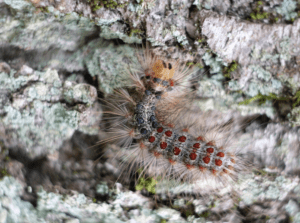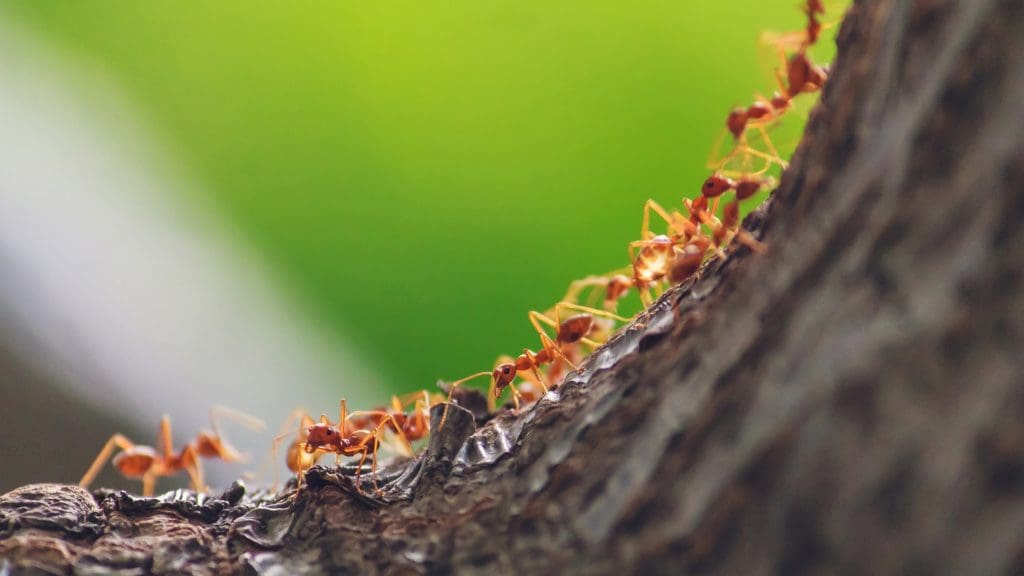

Termites and ants are often mistaken for one another, but it is important to know which pests are causing the problem in order to eradicate them. Worry not, though- this guide will help you identify which pest is invading so they can be dealt with properly.
Key Differences between termites and ants
- Termites have tube-like bodies and straight antennae while ants have cinched waists and elbowed antennae.
- Winged termites have two equally sized pairs of wings. Winged ants also have two pairs of wings, but their back wings are smaller than their front wings.
- Termite wings are whitish or grayish while ant wings are clear and brownish.
- Termite castes include workers, soldiers, and reproductives, and each caste looks very different from the others. Ant castes include queens, males, and workers, which all look relatively similar to one another.
- Termite damage looks like water damage; ant damage does not.
- Termites consume wood so their debris piles consist of droppings and no sawdust. Carpenter ant debris piles are mainly sawdust.
Termite Identification and Castes

Termites are soft-bodied insects with chewing mouthparts and a pair of straight antennae. Their bodies are oval-shaped, long, and narrow. They have three body segments- head, thorax, and abdomen- but the segments are not well defined. Their waists are not cinched in, creating a tube-like body shape. Alates, or swamers, have two pairs of wings that are equal in size and are whitish or grayish in color. Termites range in color from light brown to white, with workers typically having a darker color than alates. The three main types of termite are drywood, dampwood, and subterranean.
- Drywood termites are usually between ¼ and ½ inch in length. Their color ranges from creamy white to light brown. They have thicker waists and short legs.
- Dampwood termites are usually between ½ and ⅝ inch in length. Their color ranges from creamy white to brown. Some may have a reddish hue.
- Subterranean termites are usually between ⅛ and 1 inch in length. Their color ranges from creamy white to dark brown or black.
There are roughly 45 termite species in the United States. Each termite in a colony is divided into three castes: workers, soldiers, and reproductives. Workers are the largest caste in population and the smallest in body size. They are wingless and do most of the work around the colony like gathering food, expanding the nest, and caring for larvae and reproductives. Soldiers are the second biggest caste in both population and body size. They have large heads and mandibles and are responsible for defending the colony.
Reproductive termites are split into kings and queens, alates, and secondary reproductives. Generally, each colony has one king and one queen. They are the founders of the colony and the largest in body size, and they are responsible for laying the majority of the colony’s eggs. Alates are winged reproductives that are often mistaken for flying ants. They eventually leave their nest to find a mate and begin a new colony, where they will develop into kings and queens. While most reproductives go through the alate, or winged phase during their life, secondary reproductives never develop wings. They are workers or nymphs that become reproductives to supplementally lay eggs or replace the queen if she dies.
Ant Identification and Castes

Like termites, ants have chewing mouthparts. However, ants have hard exoskeletons and their antennae are bent in the middle. Ants have three clearly-defined body segments. Their thoraxes are connected to their abdomens by a narrow waist called a petiole. They vary in color depending on species, but most ants are black, red, brown, or yellowish. Winged ants have two pairs of wings that are transparent and have a brown tinge. Their front wings are notably larger than their back wings. Three of the most common types of ants in the U.S. are carpenter ants, odorous house ants, and pavement ants.
- Carpenter ants are between ⅝ and 1 inch in length. For the most part, they are black or brown, but some may also have yellow, red or orange coloring. Black carpenter ants are the most common in the U.S.
- Odorous house ants are small, only growing to between 1/16 and ⅛ inch long. They are typically black or brown in color. Their thoraxes are unevenly shaped.
- Pavement ants reach between ⅛ and 5/16 inch in length. They are light brown and black in color with striations on the head and thorax. Their abdomens are shiny.
Ant castes include queens, males, and workers. As with termites, queen ants are responsible for laying all of the eggs in the colony. Male ants have wings and their role is to mate with the queen. Workers are all wingless females and are the ants most likely to be seen around a home or business. They have a variety of jobs like gathering food and defending and maintaining the nest.
Termite Signs and Damage

The surest indicators of termite activity are termites themselves and the wings they shed. However, termites and their wings are not always present so it is important to watch for other signs of activity. Often, termite damage looks a lot like water damage- ceilings and floors sag, walls bulge, wallpaper bubbles, and paint peels. Additional signs include tiny pinpoint holes in drywall, very squeaky floorboards, windows and doors getting stuck, loosened tiles, damaged or crumbling wood, and wood that has a hollow sound when tapped. In some cases, termite infestations can cause a moldy or mildew odor. Termites consume wood to build their tunnels so they of course leave behind droppings. They are much neater about this process than most pests; rather than leaving their droppings anywhere they go, they dispose of them in piles outside of their nests. Look for small piles of tiny, uniformly-shaped pellets that look a little bit like salt and pepper. Subterranean termites live underground and build above-ground tunnels using droppings, mud, and saliva in order to reach food sources. Such tunnels will appear around the foundation of an infested structure.
Ant Signs and Damage
Seeing ants and their discarded wings is, again, the most definite sign of an infestation. Other signs differ depending on which type of ant is infesting. Most ant nests look like small piles of dirt or sand. Carpenter ants cause rustling noises, tiny holes in wooden surfaces, hollow-sounding wood, and wood that is crumbling, chipped, or scraped. Carpenter ants, unlike termites, do not consume wood. They excavate their tunnels and drop their sawdust, along with all other debris, in piles outside of their nests. Look for small piles of sawdust.
Still have some questions about the pests on your property? Visit our termite service page or give us a call! We’ll work with you to build your perfect plan.






